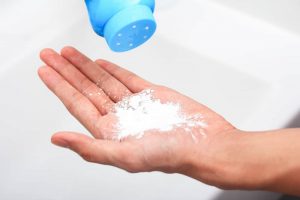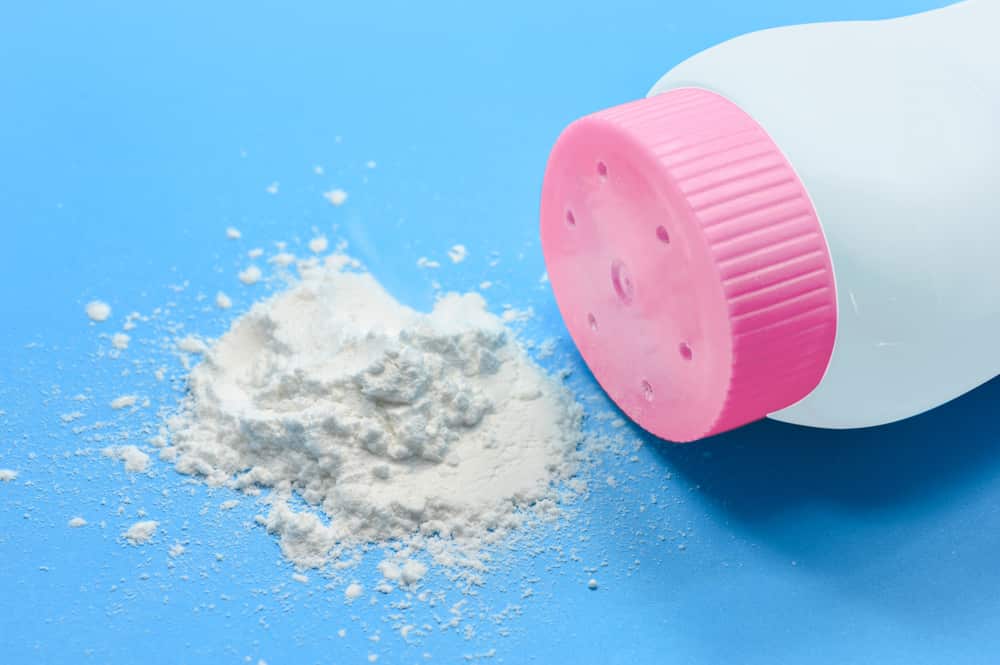For over 40 years, there have been debates and suspicions in the medical field regarding the safety of talcum powder in relation to the development of cancer and other illnesses. Although cancers such as Ovarian cancer can be dependant on a few factors, evidence has shown that talcum particles can travel from the external genital area into the ovaries, which can significantly increase the risk of developing ovarian cancer.
What is Talcum Powder?
Talcum powder has long been used in cosmetic and health-related products for decades, including  baby powder, adult body powder, and facial powders. The powder is made from a material called talc, which is a mineral that consists of basic elements such as magnesium and oxygen.
baby powder, adult body powder, and facial powders. The powder is made from a material called talc, which is a mineral that consists of basic elements such as magnesium and oxygen.
However, some talcs contain asbestos, a material that has been linked to cancer development. In 1973, with alarms sounding in regards to the dangers of asbestos in talcum powder, the FDA developed new standards to help ensure all talcum powders remain asbestos-free.
One of the worlds largest suppliers of talcum powder, Johnson & Johnson®, conducted a study on their talc mine to find that two types of asbestos fibers were present in the mine. Due to the blatant contamination, consumers face a high risk of exposure from contaminated talcum powders.
The Link Between Talc and Cancer
In the 1970’s, scientists began to notice instances of ovarian cancer in women who had used talc-based products. Although there have been decades of debates about the dangers of talcum powder, the International Agency for Research on Cancer has confirmed that talc is a carcinogen.
Approximately a decade later, a Harvard researcher found a 30% increase in ovarian cancer for women who had used talc-based products, including talcum powder, regularly. It was also discovered that in 1997, an internal Johnson & Johnson® memo states that the company was fully aware of the potential risks of their products, but stated that the risk was not high enough to stop production of their products.
However, Johnson & Johnson® is not the only brand accused of offering consumers talcum powder. Other brands include
- Gold Bond®
- Equate®
Talcum Powder Lawsuits
In 2013, the first talcum powder lawsuit was won in federal court. During the trial, Johnson & Johnson® stated that the link between talc and cancer was limited. While the lawsuit was taking place, Johnson & Johnson® continued to market and sell their products on store shelves.
Since 2013, there have been multiple lawsuits which have resulted in compensation for the victims. Some of the cases include:
- A $72 million settlement paid to the family of a woman who passed from ovarian cancer after using talc-based products for multiple years.
- A $417 million settlement to a woman who had developed terminal cancer after using the product for several years
- $4.69 billion to a group of 22 women who were diagnosed with ovarian cancer after using talc products for multiple years.
Final Note
With awareness increasing on the dangers of talc, more and more consumers have received compensation for medical expenses, lost wages, and punitive damages. Family members can also be eligible for wrongful death compensation of a loved one has died.
With medical injury lawsuits related to talcum powder and talc-based products, each and every single case is unique. USA Consumer Network can help you or a loved one get the justice you deserve with a free consultation. To learn more about how we can help, contact USA Consumer Network today.

